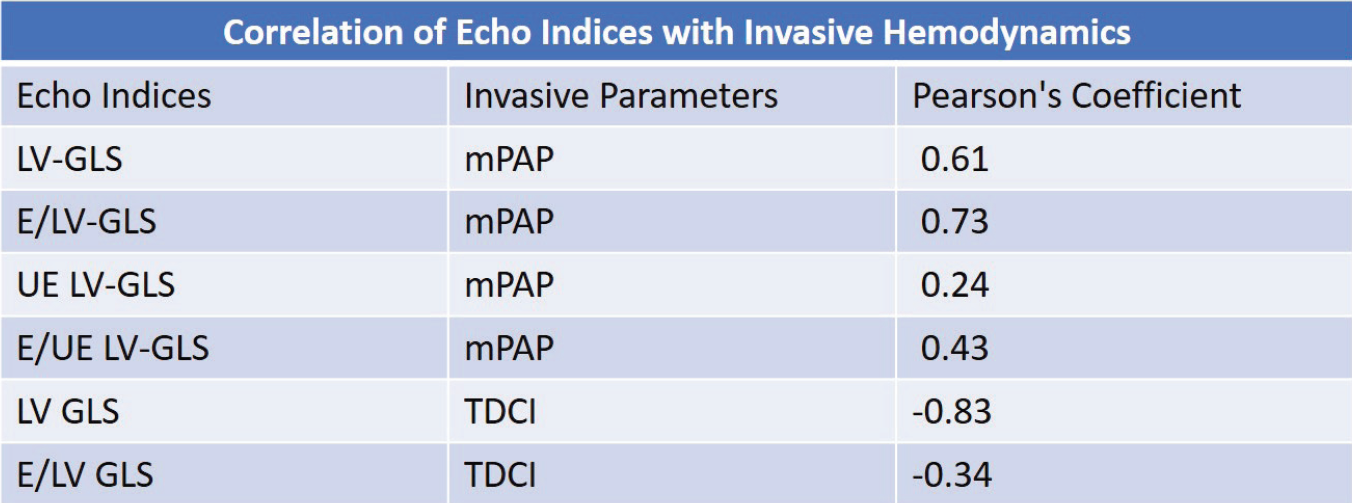Correlation of lv-global longitudinal strain with invasive hemodynamics in the first genetically modified porcine to human xeno transplant
Cullen Soares1, Susie N Hong1, Peter Hanna1, Charles C Hong1, Corbin E Goerlich2, R. Michael Benitez1, Timm Dickfeld1, Anuj Gupta1, Alison Grazioli1, Susan Joseph1, Muhammad Mohiuddin3, Bartley Griffith3, Manjula Ananthram1.
1Department of Medicine, University of Maryland School of Medicine, Baltimore, MD, United States; 2Cardiac Xenotransplant Program, University of Maryland School of Medicine, Baltimore, MD, United States; 3Department of Surgery, University of Maryland School of Medicine, Baltimore, MD, United States
Introduction: Our center performed the first cardiac xenotransplant of a genetically modified porcine heart into a human. We sought to identify whether left ventricular global longitudinal strain (LV-GLS) correlates with invasive hemodynamics in this novel clinical scenario.
Methods: Transthoracic echo (TTE) with and without contrast and right heart catheterization were performed after cardiac xenotransplantation. Retrospective analyses of TTE and hemodynamic data were performed to assess correlation between various parameters. The following invasive hemodynamic parameters were obtained: mean pulmonary artery pressure (mPAP) and thermodilution cardiac index (TDCI). Standard Doppler indices and LV-GLS with and without contrast was measured. A strain based index, Mitral E velocity/LV-GLS and Mitral E velocity/contrast enhanced (CE) LV-GLS was calculated.
Results: There was a moderate positive correlation of LV-GLS and CE LV-GLS with mPAP and moderate negative correlation of LV-GLS with TDCI. There were weaker positive correlations with E/LV-GLS and E/CELV- GLS with mPAP and a weaker negative correlation of E/LV-GLS with TDCI. See Table.
Conclusion: Our data shows that LV-GLS correlates with invasive hemodynamics in a porcine to human xenotransplant. It highlights the limitations of Doppler derived indices due to impact of donor and recipient atrial mechanics, loading conditions and LV compliance. LV-GLS complements invasive hemodynamics in the management of a cardiac xenotransplant.
